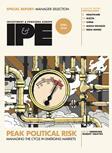Defining the precise scale advantages for DB pension funds

Most people working in the institutional asset management space have an intuitive understanding that the size of the institution, measured by total assets under management (AUM), has an impact on performance – that bigger funds tend to perform slightly better. On the other hand, there are plenty of stories of successful hedge funds that got too large and lost their way, unable to continue delivering on past success due to their size. So which is it? Do larger institutional investors outperform their smaller kin, or is AUM the proverbial millstone in terms of performance?
This content is only available to IPE Members
Already an IPE Member? Sign in here
Unlock your IPE Membership Package
For unlimited access to IPE’s industry-leading market intelligence, comprising news, data and long-form content on European pensions and institutional investment.
- Secure online payment
- Free European delivery
- Best value for price
IPE Membership
IPE has created a suite of products and services for Europe’s institutional investment and pensions community.
country analysis and data
and strategies in depth






